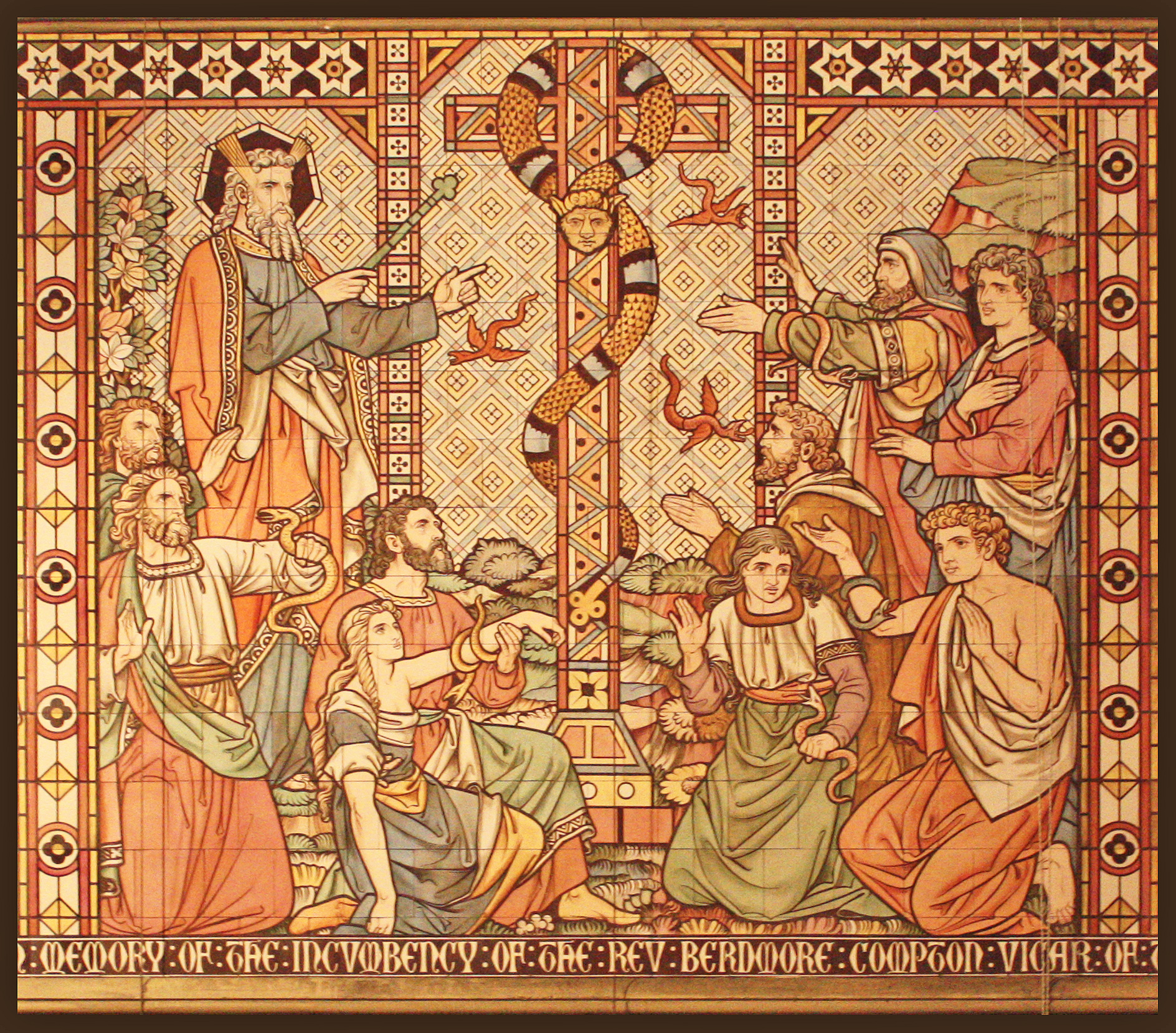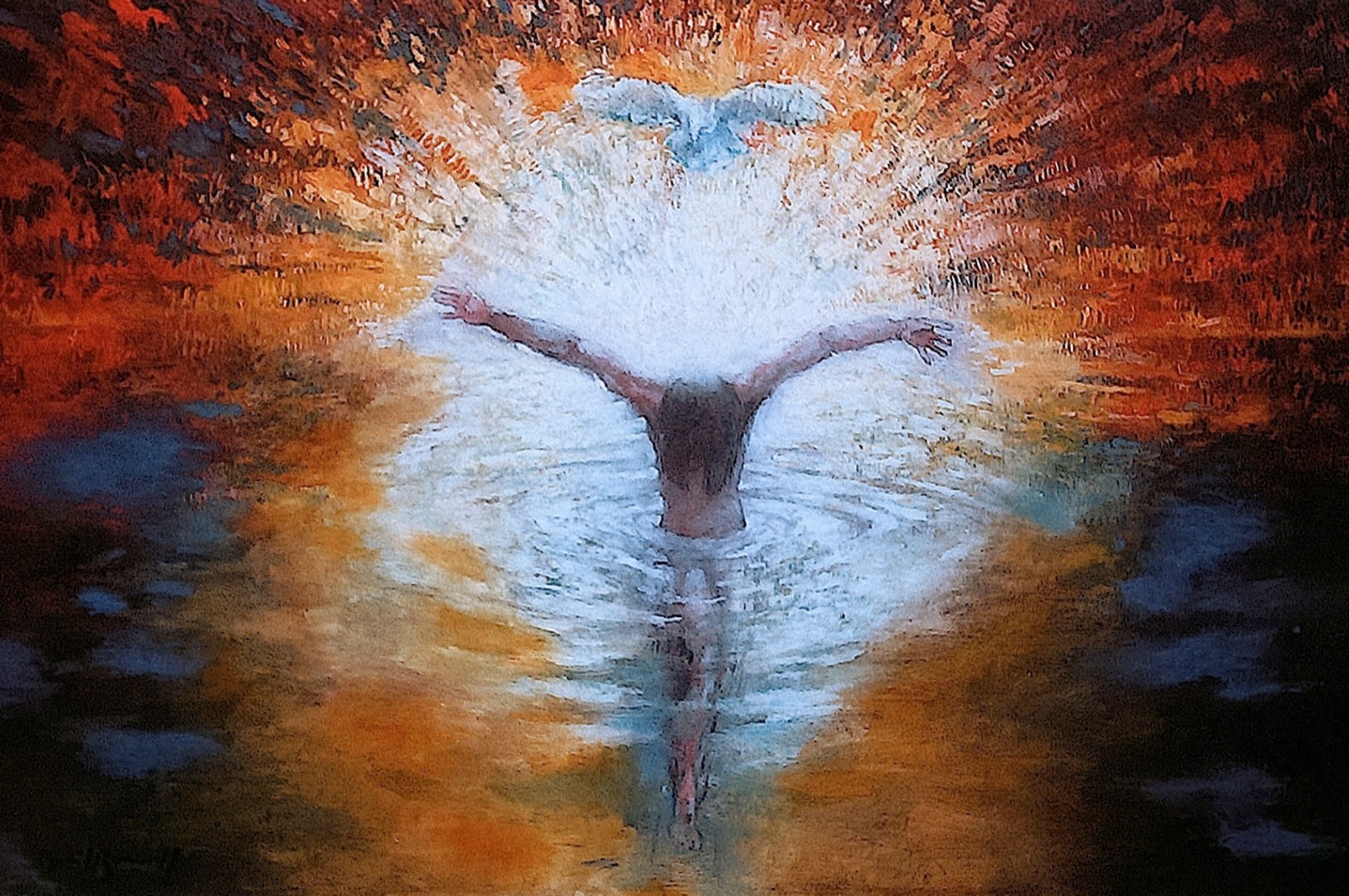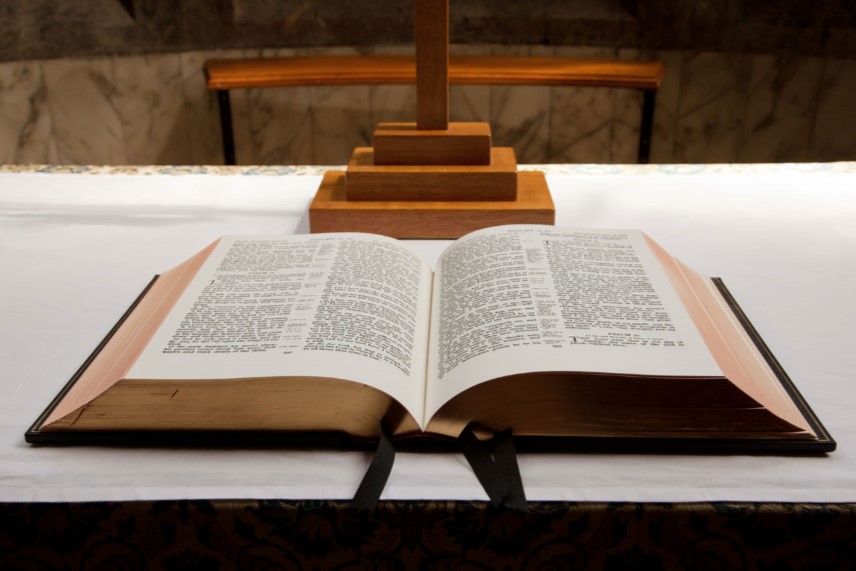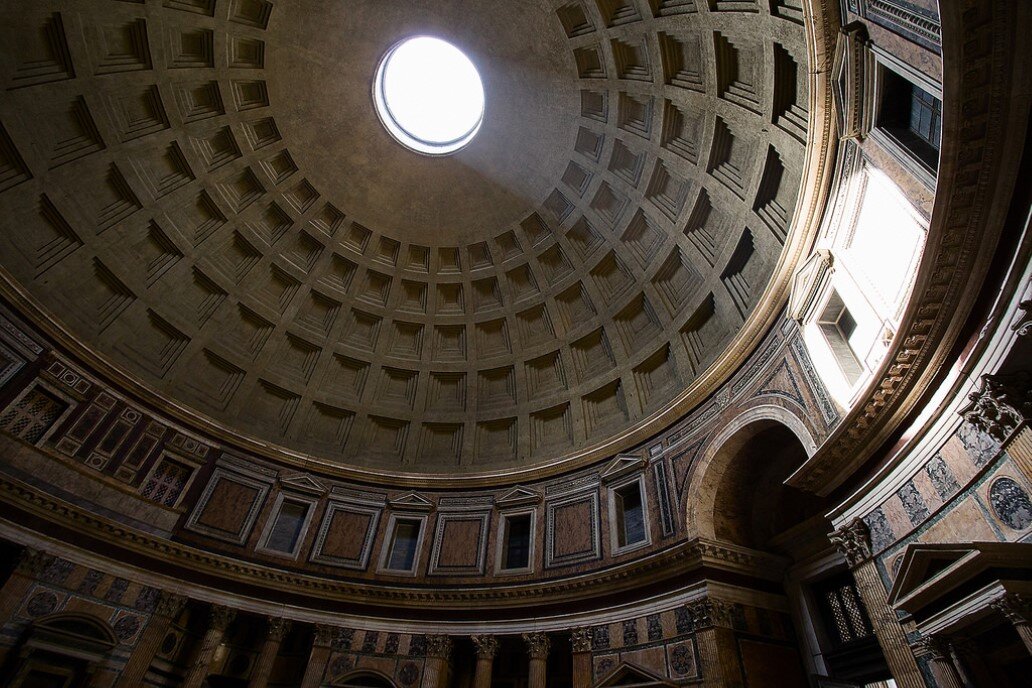Return to the Garden Land
Bible Studies, Messages, Papers on the Book of Exodus
Photograph: Havasu Falls, in Cataract Canyon, on the Havasupai Reservation in Arizona. Photo credit: Paul Kordwig | Wikimedia Commons, CC-4.0.
Below are messages, small group leader notes, and exegetical notes on the Book of Exodus.
-
Exodus 3:1 - 12 God and Mountain Climbing. A message given to Neighborhood Church of Dorchester in Boston, MA. When God appeared to Moses at the burning bush by Mount Sinai, (1) He was revealing Himself in Moses’ ordinary routine of tending sheep; (2) using the burning and climbing mountains motifs as symbolic of the refinement and strengthening of Moses’ character; and (3) retelling the story of the fiery sword outside Mount Eden, showing Moses that the way back home was there. This is a nice example of biblical patterns and intertexuality, with the application of God’s restorative, not retributive, justice, for the sake of our spiritual formation.
-
Exodus 1:1 - 2:25 The Savior Who Needed Saving
Exodus 3:1 - 4:31 God Calls Moses to Be a Prophet
Exodus 5:1 - 6:27 Moses Confronts Pharaoh, God Confronts Empire
Exodus 6:28 - 11:10 God Speaks the Ten Plagues: Their Meanings
Exodus 11:1 - 14:31 God Takes the Firstborn, the Passover, and the Exodus
Exodus 6:28 - 14:31 God and Pharaoh Harden Pharaoh's Heart
Exodus 15:1 - 27 The Victory Song by the Sea
-
Exodus 1:1 - 2:25 The Savior Who Needed Saving
Exodus 3:1 - 4:31 God Calls Moses to Be a Prophet
Exodus 5:1 - 6:27 Moses Confronts Pharaoh, God Confronts Empire
Exodus 6:28 - 11:10 God Speaks the Ten Plagues: Their Meanings
Exodus 11:1 - 14:31 God Takes the Firstborn, the Passover, and the Exodus
Exodus 6:28 - 14:31 God and Pharaoh Harden Pharaoh's Heart
Exodus 15:1 - 27 The Victory Song by the Sea
Exodus 16:1 - 17:7 God's Spiritual Bootcamp: Lessons on the Appetite
Exodus 17:8 - 18:27 God Restores Wisdom and Justice
Exodus 19:1 - 24:18 God Beckons from the Mountain
Exodus 20:1 - 28 God's Ten Words
Exodus 21:1 - 36 God the Restorer and the Laws of Restoration
Exodus 21:28 - 22:17 God the Restorer and the Laws of Theft
Exodus 22:18 - 23:33 God the Truth and the Laws of Falsehood
Exodus 25:1 - 31:11 God Prepares His Wardrobe
Exodus 31:12 - 34:35 God's Covenant and Moses the Mediator
Exodus 35:1 - 40:38 God Tabernacled Among Us
-
Literary Structures in Genesis
Genesis has one introductory section (1:1 - 2:3) and ten genealogies (2:4; 5:1; 6:9; 10:1; 11:10; 11:27; 25:12; 25:19; 36:1; 37:2). This fits a pattern of God acting in a pattern of ten actions. Additionally, Genesis 1 - 11 is in the literary format of other Ancient Near Eastern creation myths, which accentuates the points of disagreement. Then, major chiastic structures are found in Genesis: the Noah story; the Abraham, Sarah, and Hagar story; the Jacob, Leah, and Rachel story; the Joseph and Judah story. These chiastic structures influence our perception of the characters and interpretation of these stories, so they are vital to consider when teaching and studying Genesis.
God, Omnipotence, and Evil: God in Genesis
Text of a presentation about the three “omni’s”: omnipotence; omniscience; and omnibenevolence. If God is omnipotent and omniscient, can He do something that He didn’t think of before? Pitting omnipotence against omniscience is a logical problem. Either one has to take precedence. Since God is Triune, His character is loving, so His omnibenevolence comes first, and His omniscience serves His omnibenevolence, and His omnipotence serves those qualities.
The Genesis Account and the Documentary Hypothesis
Text of a presentation. The Documentary Hypothesis is the idea that the Pentateuch is a political compromise between four different schools of thought in Israel, and is commonly taught in deconstruction circles. But critics raise four concerns. First, there’s no physical or historical evidence for these four schools of thought. Thus, the Documentary Hypothesis rises and falls on the literary arguments alone. Second, there is the Samaritan Pentateuch. If the “Elohim” school, which stands for the Northern Kingdom, already had a fully integrated Pentateuch, and not just an E document, how do we explain that? The Samaritan Pentateuch has literary features that fatally damage the Documentary Hypothesis. So does another manuscript family, the Masoretic text. Third, a damaging literary point: most of the literary analysis was done in ignorance of the actual properties of ancient literature at the time, and the literary analysis done primarily by Jewish rabbis and scholars. In fact, most of the foundational research on the Documentary Hypothesis comes from Germany, and it had undertones of German anti-Semitism from that period. And fourth, none of the literary criteria work in any consistent way. We examine specific examples.
The Creation Account and the Narrative of Science
Text of a presentation about how to interpret the diversity of life (evolution) and the origin of life. The presentation considers a range of mutually complementary options between the narratives of Genesis and science. The presentation encourages us to not go to the extremes: Neo-Darwinian evolutionists and “literal” six-day creationists.
The Creation Account in Genesis and Tolkien's Silmarillion
A short reflection Mako wrote for Dr. Gary Deddo, for his class in Systematic Theology 1, to illustrate God’s providence and plan. The sheer number of parallels Tolkien’s creation story has to the biblical story is impressive. (1) Tolkien has one eternally existing God, Eru Iluvatar, as the biblical story has one God. (2) Iluvatar creates the angels through a verbal means, singing, as God creates everything by a verbal means, speaking. (3) Iluvatar desires goodness and harmony in the universe, as God clearly does by the order He builds into creation. (4) Iluvatar allows the angels freedom, as God implicitly does. This explains why (5) Iluvatar is not the author of evil, as God is not the author of evil. Rather, (6) that role falls to a disobedient angel named Melkor, the Satan figure. Finally, (7) Iluvatar commits himself to overcoming the dissonance introduced by Melkor, as God commits himself to overcoming the dissonance introduced by Satan.
Slideshow presentation as part of a paper that includes a bit more material. Why do Christians think that “the angel of the Lord” is the pre-incarnate Jesus? Is that fair to the text? Or is it cleverness based on a conveniently worded text where the angel only represents God? A proper response must consider how God is at least binitarian, if not overtly trinitarian: transcendent, immanent, and the link between them. Thus, theophanies of God would culminate in Jesus. In addition, the human characters of Genesis reflect God’s desire to restore human partnership to what He intended, which would culminate in Jesus as well.
Whose Family? Which Union? Reflections on Scripture, Human Sexuality and God's Purposes
A paper summarizing the five Letters to a Gay Friend. This is an exegetical and pastoral paper examining biblical passages that are important in the discussion about what God’s vision for human sexuality is: Genesis 1 - 2; Leviticus 18 and 20; Matthew 19; Romans 1; 1 Corinthians 6 - 7; 1 Timothy 1. Ultimately, we have to look at the the nature of human desire in general, as a gift from God to move us towards extending ourselves towards Him and others. However, we are called to submit our desires to Jesus, who demonstrated the normative human emotions and desires.
Why Did God Choose a "Chosen People"? Why Not Just Skip Right to Jesus?
These two questions stand behind all of the questions that we might have about God’s relationship with the people of Israel as portrayed by the Old Testament. Why did God apparently favor Abraham and Sarah and their family? Why did God protect them by taking other human life, like in the Flood, Sodom and Gomorrah, the Egyptian firstborn, etc.?
When God took human life in these occasions, it was not to supposedly demonstrate "retributive justice," but rather to protect His human partners at the time, until Jesus came among the Israelites.
From Garden to Exile: A Thematic and Canonical Analysis of the Old Testament
There is a pattern in the canonical shape of the Old Testament literature, as divided into three sections: Pentateuch; Prophets; Writings. Each section begins with a garden or garden imagery. Each section ends with a state of exile yet hope for restoration. Biblical scholar John Sailhamer calls these ‘compositional seams’ linking and holding together books of the Bible. The arrangement of the books within each division reinforces the story and significance of garden to exile. Hope builds on itself.
-
Alastair Roberts, 40 Days of Exoduses. Alastair’s Adversaria. A very helpful collection of examples of how biblical storytelling repeats structures and plots.
The Bible Project, Sacrifice and Atonement. The Bible Project, Aug 27, 2015. A good 7 minute video which accurately talks about the purification by blood depicted in the Jewish offerings
The Bible Project, The Law. The Bible Project, Oct 12, 2015. A very good 6 minute video which places the stress on the story of the Torah, and beyond, not simply the commandments.
The Bible Project, The Book of Exodus, Overview Part 1. The Bible Project, Nov 28, 2014. A 6 minute video
The Bible Project, The Book of Exodus, Overview Part 2. The Bible Project, Feb 8, 2015. A 5 minute video.
The Bible Project, Tree of Life. The Bible Project, Feb 18, 2020. Stunning visual representation of Eden and the tree of life as a temple, offering God’s life, going through to the burning bush of Moses, Sinai, Zion, and eventually Jesus
The Bible Project, The Character of God. The Bible Project, Jun 30, 2020. Examines God’s character qualities from Exodus 34:6 - 7, “The Lord, the Lord, a God compassionate and gracious, slow to anger, overflowing with loyal-love and faithfulness.” See also The Bible Project, God. The Bible Project, Oct 18, 2018. Tim Mackie and Jon Collins do an outstanding job giving an introduction to how an understanding of God developed throughout the biblical time period, eventually offering a way to understand the Trinity in a way that the biblical human authors came to express.
The Bible Project, Compassion. The Bible Project, Sep 22, 2020. Examines God’s character qualities from Exodus 34:6 - 7.
The Bible Project, Grace. The Bible Project, Sep 22, 2020. Examines God’s character qualities from Exodus 34:6 - 7
The Bible Project, Slow to Anger. The Bible Project, Nov 10, 2020. Examines God’s character qualities from Exodus 34:6 - 7.
The Bible Project, Loyal-Love. The Bible Project, Jan 12, 2021. Examines God’s character qualities from Exodus 34:6 - 7.
The Bible Project, Faithful. The Bible Project, Feb 9, 2021. Examines God’s character qualities from Exodus 34:6 - 7.
Rabbi David Fohrman, Female Servitude...Wait, What? Alephbeta. “The Surprising Purpose Of The Bible’s Female Slavery Laws”
Inspiring Philosophy, How Many Altars Could Israel Build? Inspiring Philosophy, Nov 26, 2022. “A common objection to the Bible is Exodus allegedly says Israel could build multiple altars for God, whereas Deuteronomy said Israel could only have one altar where sacrifices could be performed. But do these two passages really contradict?”
Henry Abramson, What is the Extra-biblical Historical Evidence for the Exodus? Henry Abramson, Mar 27, 2023. Corroborating evidence abounds that the author(s) of the Book of Exodus knew conditions in ancient Egypt. However, there is a lack of archaeological evidence for the the miraculous Exodus event itself; it remains a matter of faith. See also Henry Abramson, Exodus in Historical Perspective (Jewish History Lab). Henry Abramson, Oct 27, 2020.
Kaitlyn Schiess and Carmen Imes, Why Did God Harden Pharaoh’s Heart? Curiously, Kaitlin | Holy Post Podcast, Jul 15, 2025.
-
Rev. Cheryl L. Hauer, Amalek. Bridges for Peace, date unknown.
Rabbi Irving Greenberg, Remembering Amalek. My Jewish Learning, date unknown.
Rabbi Shai Held, The Evil Within. My Jewish Learning, date unknown.
But if we read closely, we come upon a magnificent textual ambiguity (which is clear in the Hebrew, but difficult to capture in translation). In describing the scenario under which Amalek attacks Israel, the text tells us that one of the parties “did not fear God” (velo yerei e-lohim).
This phrase is usually (as in the translation offered above) taken to refer to Amalek: Amalek is undeterred by fear of God, so it allows itself acts of unspeakable savagery. But it can just as easily be understood to refer to Israel; it is Israel who fails to fear God in our story. How so? If Amalek is able to attack the stragglers in the rear, then somehow the weak and exhausted have been left vulnerable and exposed.
The Jewish people have just experienced the Exodus, the fundamental lesson of which is to love and protect the vulnerable–and here is a segment of the people left totally unprotected and exposed to violent danger. So neither Amalek nor Israel seems to truly fear God: The one because it attacks the weak, the other because it fails to protect them.
Aryeh Klapper, How Not to Talk About Amalek. The Times of Israel, Mar 4, 2020. Includes discussion of how the story of the Amalekite attack in Exodus 17 is linked to Haman in the book of Esther by the standard Jewish celebration of Purim.
Peter Beinart, Purim After Hawara: The Amalek In Us. The Beinart Notebook | Substack. Mar 6, 2023. Includes rich discussion about Esther and links to resources on how Esther has been perceived and used in Jewish tradition.
Noah Lanard, The Dangerous History Behind Netanyahu’s Amalek Rhetoric. Mother Jones, Nov 3, 2023.
-
TBD



























